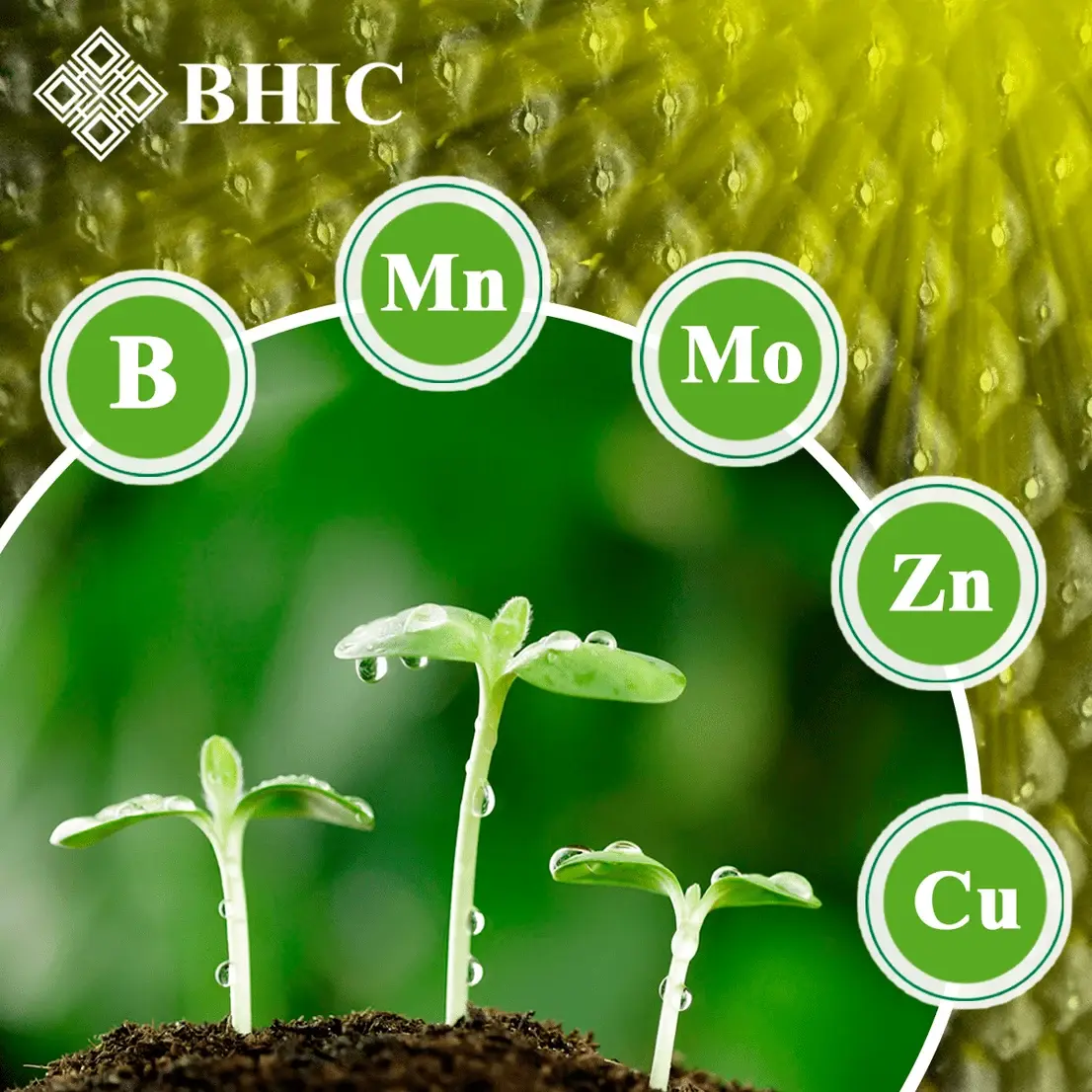Trace elements: the key to healthy and productive sunflower
Trace elements (B Mn Cu Zn Mo) are important components of a sustainable and high sunflower yield. Due to the fact that their content in plants and soils is quite low (0.01-0.001% of dry matter), they are called trace elements

Boron (B) is a trace element that is involved in such processes as pollination, fertilization, and regulates protein and carbohydrate metabolism, and affects a number of other biochemical processes in the plant.
Sunflower is sensitive to boron deficiency. Preventive application of boron before the period of drought and high temperatures reduces the intensity of plant respiration, water evaporation and increases the plant's resistance to drought.
How to determine if sunflower lacks boron?
With a lack of boron, plants stunt in growth, young leaves are deformed, cracks appear on the stem, and it becomes brittle. In case of severe boron deficiency, growth points die off, flower formation is disrupted, baskets are deformed and contain only sterile flowers. The number of seeds in the basket is reduced. The seeds in the baskets are unevenly distributed, sometimes no seeds are formed in the central part of the baskets. The formation of lateral stems is also a sign of boron deficiency.
The need. For 1 ton of sunflower harvest, 65 grams of boron are required. The main amount of boron (70-80%) is consumed in the phase from 3 pairs of leaves to the appearance of flower buds.
Molybdenum (Mo) takes an active part in the formation of a healthy root system and is also a participant in nitrogen metabolism. It is better to apply it in combination with boron, as both elements contribute to each other's work. The deficiency is manifested on young leaves, starting from the edges, and interveinal chlorosis develops. Narrow stripes along the main veins remain dark green.
Manganese (Mn) plays an important role in the nitrogen assimilation cycle. When it is deficient, the growth of the aboveground mass above the root prevails, the plants stretch out and become brittle and susceptible to disease. Sunflower has the greatest need for manganese in the phase of 1-2 pairs of leaves and in the budding phase. Manganese deficiency - young leaves show signs of spotted chlorosis, while old leaves may not be affected at all. Plant growth slows down, the stem becomes thinner. The causes of the deficiency can be sandy or poorly structured soils, prolonged periods of cold and wet weather.
Copper (Cu) activates redox processes, participates in the synthesis of lignin by the cell wall, and increases the activity of seed production. Copper deficiency is similar to calcium deficiency in that young leaves turn pale from light green to white.
Zinc (Zn) not only participates in the synthesis of chlorophyll and several vitamins in plants, but also increases the crop's resistance to temperature stress, in particular, frost and sudden changes in atmospheric temperature. The deficiency is evidenced by narrow young leaves, often with deformed edges, which become stiff and the plant as a whole is stunted. Cold weather can cause similar symptoms.
Don't forget about balanced sunflower nutrition. The practice of foliar feeding with multicomplex microfertilizers or monochelates, as well as pre-sowing seed treatment with microelements, has proven to be very effective. This increases germination energy, field germination, resistance to diseases and adverse weather conditions.
In conclusion, it would be appropriate to recommend that all crop residues after harvesting sunflower should be left on the field, which will significantly compensate for the removal of elements by the crop.

 Choose a country
Choose a country